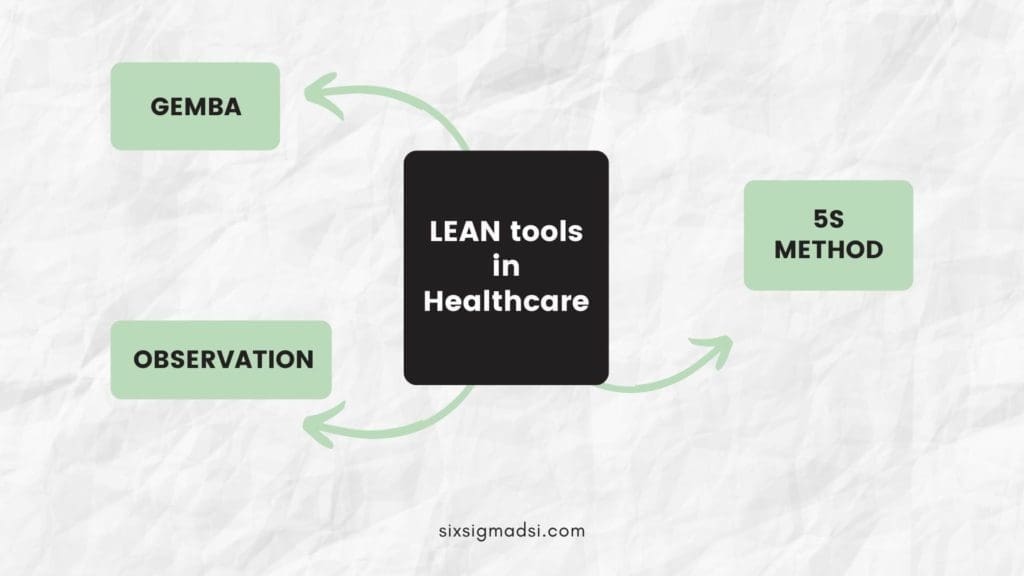Table of contents
How Hospitals can Benefit from a LEAN Model
LEAN is a methodology in health care that aims to identify and solve the problems that lead to waste in a system. Listening to your customers is key. Engage them in the things they value and meet their expectations. Industries around the world have adopted “LEAN management” and “LEAN thinking” practices. LEAN is a term that has been adopted by many industries, including Toyota and others in the automotive sector. The Lean model principles and methodologies can help improve the quality in healthcare and reduce errors in complex healthcare systems.
LEAN thinking is making its mark in the healthcare sector. What does LEAN management mean for healthcare? This blog will explore a few key LEAN strategies any healthcare organization could consider adding to its quality improvement program.
What is LEAN thinking?
Neosho Memorial Regional Medical Center considers LEAN an acronym that stands as:
- Leadership
- Eliminate all waste
- Get on board now
- Never ending
These elements are the basis for improving healthcare processes. Every step should add value and ultimately result in a better patient experience. LEAN in healthcare means that we need to look at how valuable our processes are, and then drill down into those processes to find ways to eliminate waste. Recognizing that healthcare processes change constantly, we must be able to identify the key processes that provide value for our patients. LEAN methodology in health care is all about providing a structured method to reduce waste and increase the value of our patients’ lives.
The LEAN Model is a process improvement tool.
The Lean model principles in Healthcare are a place where we understand the importance of listening to our patients. What are our customers’ needs and wants? What are their expectations regarding the delivery of care?
Our customers expect and want us to efficiently use their time and ours. LEAN methodology in health care helps us to eliminate waste that does not add value for our patients. We can eliminate these types of waste in healthcare by using LEAN methodologies.
Simple LEAN strategies
LEAN tools help organizations identify waste and provide ways to standardize processes, thereby adding value to our customers. Let’s have a closer look at LEAN tools.

Tool #1: Gemba
The LEAN model offers a tool called “Gemba walks” in healthcare. Gemba walks are when members of the healthcare team go to the location where the actual work is taking place to observe the work in action. It is sometimes called “going to the scene”, as you can see the people involved and the way the work is delivered. The Gemba, in other words, is where value-creating work happens.
Gemba can be a full-contact activity if done correctly. This means that you go to the department and ask thoughtful questions.
Tool #2: Observation
Gemba is a form of observation. Observation, however, is a bit more sophisticated. We’re not going to observe, but we are going for a reason.
Observation must take place in person, not via a phone call or from an office. The Gemba is where observation takes place. We go to the site of the work and look at each individual element, including each nurse or patient, one by one. This is a structured observation process that uses an observation tool sheet to record what we see. To fully understand the effect of an activity on patient safety and experience, we want to record the work being done. This involves observing the current situation and comparing it to what should be.
It may surprise you to discover the surprising insights that this structured observation process can provide. It can be difficult for leaders to see that patient safety processes are not working as they should. That’s why it is crucial to document the work being done. It is also a great way for patients to view the situation from their perspective and expose inefficient processes. We can create a culture that encourages continuous improvement by identifying the root cause of the problem and working to correct it.

Tool #3: 5S workplace organization
The 5S method helps to organize the workplace using five Japanese words: seiri, seiton, seiso, seiketsu, and shitsuke. It might seem that the easiest way to implement the 5S method is to “keep the stations tidy.” There’s more to it than that. In English, 5S tells us to do the following:
- Sort – Get rid of unnecessary items. This will help to remove clutter from your work environment and lower the cost of buying redundant equipment.
- Straighten – Label and organize each item to ensure that there is no confusion as to where it belongs. This makes the workflow much more smooth.
- Shine – Regularly clean and straighten your equipment. This ensures it is properly maintained and safe for continued use.
- Standardize – Once you have established a process to meet the first three bullets, make it the standard for organization in your workplace. Everything should have a place and should return to that place.
- Sustain – Regular audits of the work area should be performed in order to maintain order and ensure that the established process continues.
The 5S method is more than just organizing a desk surface in a hospital. Neosho Memorial Regional Medical Center has a designated area for our EKG machine, as well as our oxygen tanks. These areas are clearly marked and labeled. Our staff is trained in how to properly replace the equipment when it’s no longer in use. These visual controls are also used to control items such as crash carts and other items in the system. We use the 5S method to stay organized. But it has also helped us to do our jobs more efficiently, ultimately allowing us to provide better care for our patients.
Neosho Memorial’s culture easily integrates the LEAN methodologies and principles in healthcare. LEAN is embraced by our managers. We are continuing to learn about LEAN and how to use them to increase our customers’ value. Although only a small number of LEAN philosophy concepts were discussed in this blog, you can see their impact on our ability to provide the best care for our patients.
The Use of Tools and Eliminating Waste
The eight wastes must be managed and eliminated in order to streamline a system and make it more efficient for patients and staff. This lean approach includes tools such as visual management, 5S, and process mapping that can be used to reduce waste. Consistent Ward’s module provided a simple approach to eliminating waste. Process mapping and spaghetti diagrams were used to visualize waste. This was part of the lean strategy that Southern Tasmania used. Based on the distances that staff and/or products traveled, the spaghetti diagram was used to determine the optimal layout for a department or clinical area. Spaghetti diagrams can be used to expose inefficient layouts, and they can help identify long distances between key steps.
Lean methodology in health care was used to draw a floor plan for the area being evaluated. This diagram was used to map the movement. This diagram was used to help redesign the process. The lines running through the area were examined to identify any unnecessary movements. The lines across the area were analyzed to identify unnecessary movements. This allowed for the decision to move two areas closer together in order to optimize flow. Analyzing the spaghetti map revealed that there was a lot of staff movement to a storage room located outside of the Royal Hobart Hospital. Healthcare environments should be designed to support healthcare professionals.
Staff had to spend a lot of time collecting the materials needed for care delivery. It was not just because of the distance traveled, but also because it was difficult to locate a specific item in a room. This information was used to decide to move the storeroom into the middle of the clinic area. In other words, the spaghetti diagram was a tool to map ‘Lean Process Improvement’. It gave a visual overview of the process’ geography.
The next step was to sort, locate a place for all materials, and clearly mark its location. The process was repeated in all areas of the hospital. The first image shows a storage area before the changes were made. Image two shows the same storage space after they had been made. This was done to test the efficiency of the changes. A staff member was asked to locate certain supplies before the changes were made. The process was then repeated after they had been made. It was shown that it took significantly less time to locate the items required. This tool was used to create and sustain these improvements: the 5S. The acronym 5S stands to Sort, Shine Set, Standardize, Sustain. This involves organizing and cleaning areas to ensure safety for staff and patients. Standardization is crucial to all of this.
How else do you think that hospitals can benefit from the LEAN model?
Let us know in the comments.



















